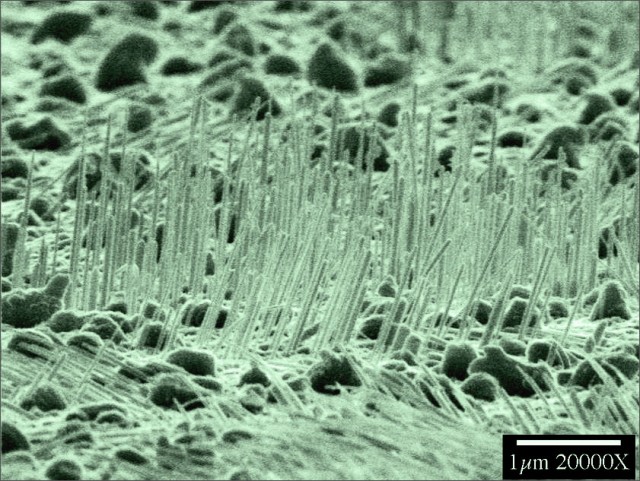
Software patents have long been contentious things, but patents in other areas of science are also becoming frequent subjects of editorials and court cases, with biotech and genomics making it to the Supreme Court. Now, if an editorial in Nature is to be believed, nanotechnology is set to become the latest patent battleground.
Joshua Pearce is a professor at Michigan Technological University, and he very explicitly argues for taking an open-source and open-access approach to nanotechnology research. But he also goes well beyond that, calling for a patent moratorium and a gutting of the law that governs tech transfers from government-funded university research. At stake, he argues, is the growth of a field that could be generating trillions of dollars of economic activity within a few years.
Pearce's viewpoint may seem like a radical overreaction, but there are technical reasons that nanotech might be more prone to patent troubles than other fields. Though often portrayed in science fiction as having something to do with tiny robots, nanotechnology is actually based on the premise that the familiar properties of materials in the world around us can be radically altered when those same materials are structured on nanometer length scales. To give one example, nanoparticles of gold aren't actually golden (a suspension of them looks red) and they have a different melting point from the bulk metal. More significantly for commercial purposes, their catalytic activity can change dramatically—gold nanoparticles can be used in the production of completely different chemicals.
Normally, the natural properties of a material aren't patentable. But in this case, there is often a well-defined innovation, in the form of a manufacturing process that is needed to create specific nanomaterials. And slight tweaks to the process can often have significant influences on the properties of the end product. To give another example, carbon nanotubes can be either metallic or semiconducting, and the two types have radically different applications. IBM's recent advance in producing nanotube-based transistors depended entirely on the semiconducting version.
Partly as a result, Pearce has found that there are over 1,600 US patents that mention single-walled carbon nanotubes. Intel has one that covers any with a diameter of less than 50nm; Rice University holds one for any material that is over 99 percent pure nanotube. The nightmare faced by anyone attempting to innovate in that space should be obvious, but in case it wasn't, Pearce cites an example where a small nanotech company faced legal fees that were a substantial fraction of its assets, and another where a jury hit a company with damages that were nearly twice its total value.
Some of Pearce's solutions are perfectly reasonable. He argues that the National Science Foundation adopt the NIH model of making all research it funds open access after a one-year time limit. But he also calls for an end of patents derived from any publicly funded research: "Congress should alter the Bayh-Dole Act to exclude private IP lockdown of publicly funded innovations." There are certainly some indications that Bayh-Dole hasn't fostered as much innovation as it might (Pearce notes that his own institution brings in 100 times more money as grants than it does from licensing patents derived from past grants), but what he's calling for is not so much a reform of Bayh-Dole as its elimination.
Pearce wants changes in patenting to extend well beyond the academic world, too. He argues that the USPTO should put a moratorium on patents for "nanotechnology-related fundamental science, materials, and concepts." As we described above, the difference between a process innovation and the fundamental properties resulting in nanomaterial is a very difficult thing to define. The USPTO has struggled to manage far simpler distinctions; it's unrealistic to expect it to manage a moratorium effectively.
It could be that, a bit like Stallman, Pearce is attempting to be provocative as a means of focusing attention on a topic that has otherwise been widely ignored. If so, it has worked—the issues he points out seem worthy of attention. But, as with Stallman, incremental solutions seem more likely than the sweeping changes he's calling for.
Nature, 2012. DOI: not yet available.
reader comments
53